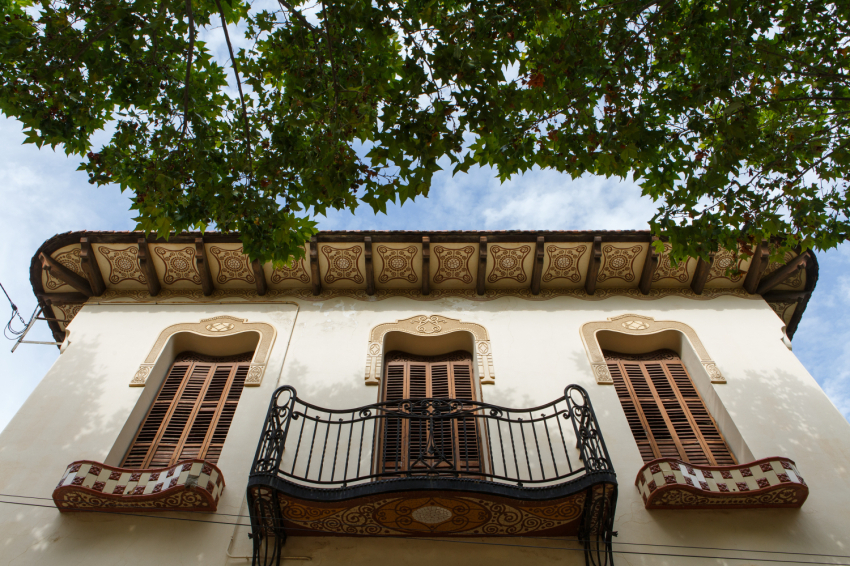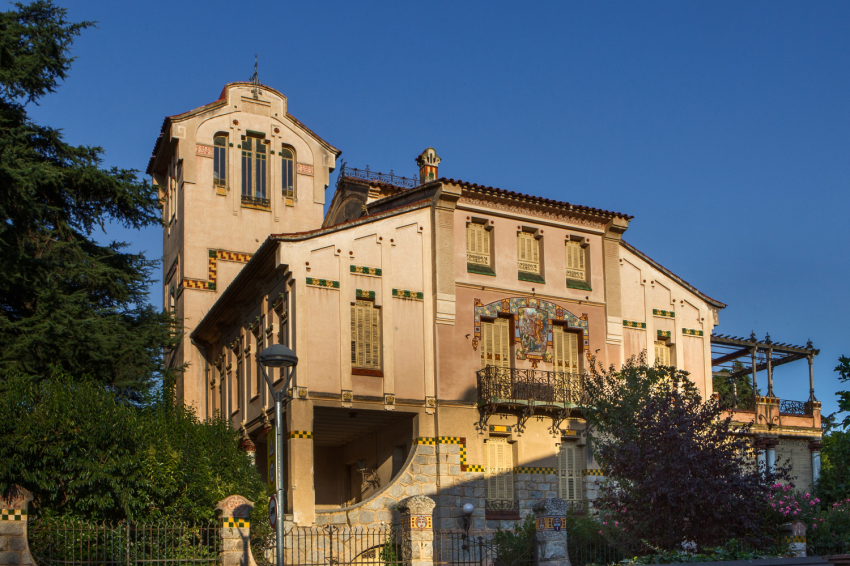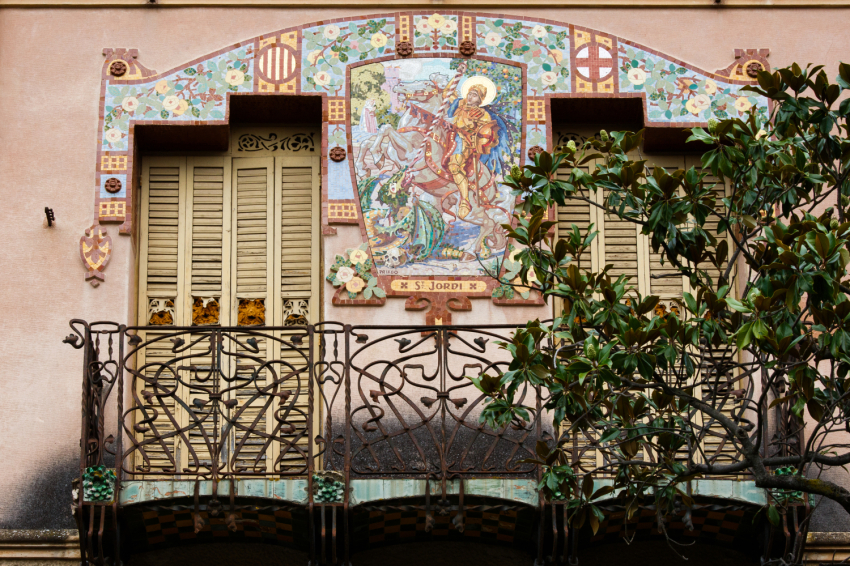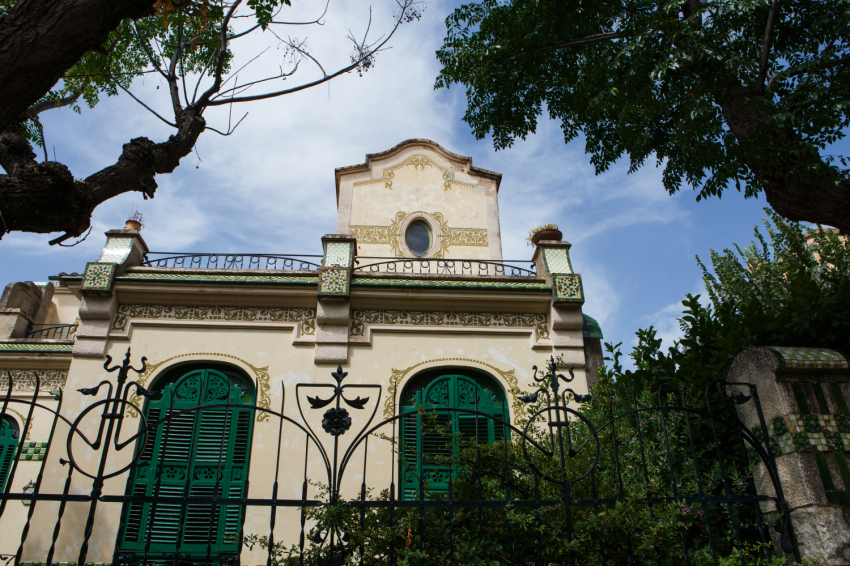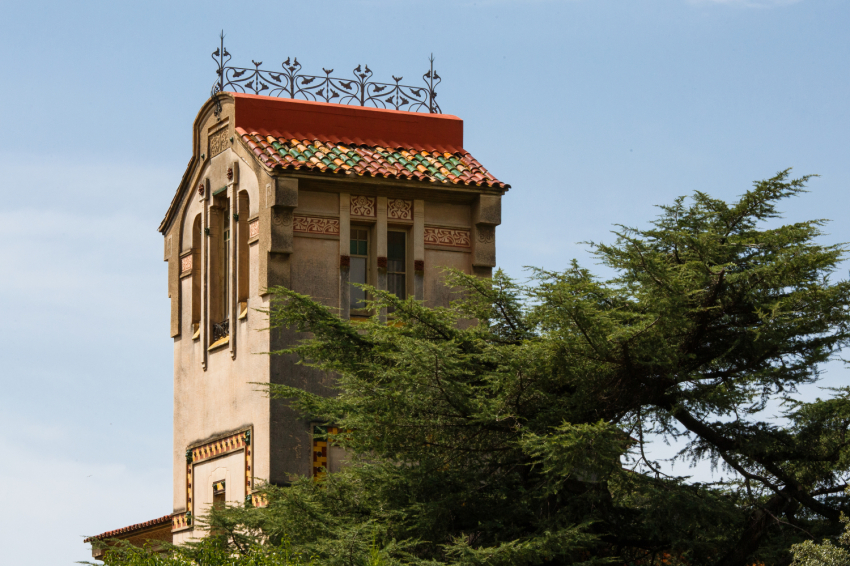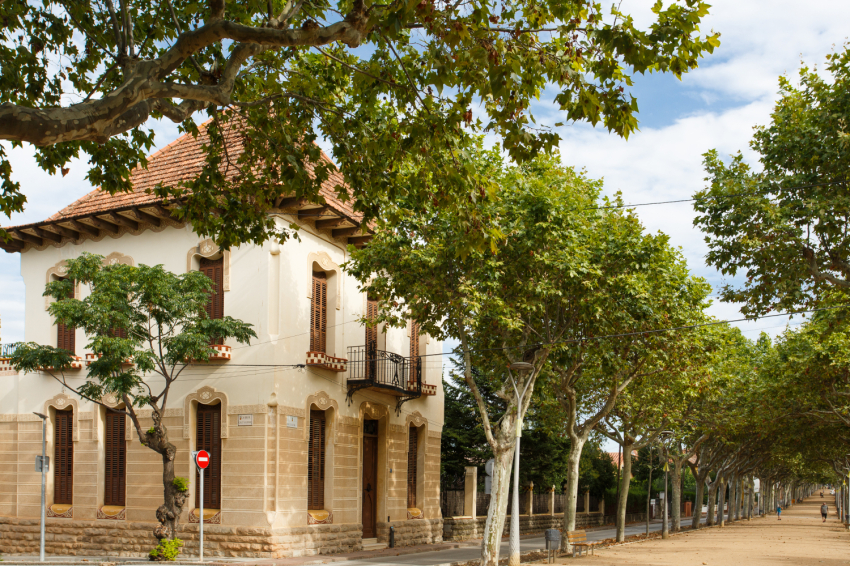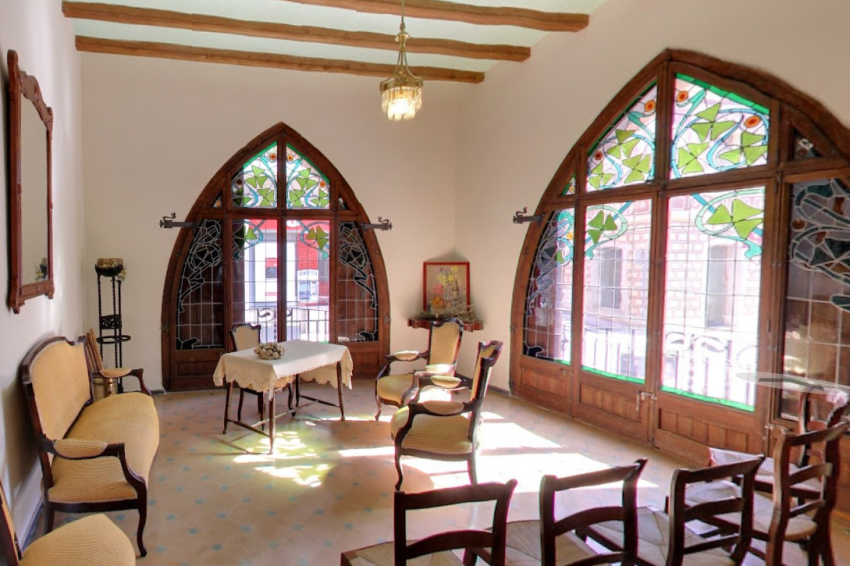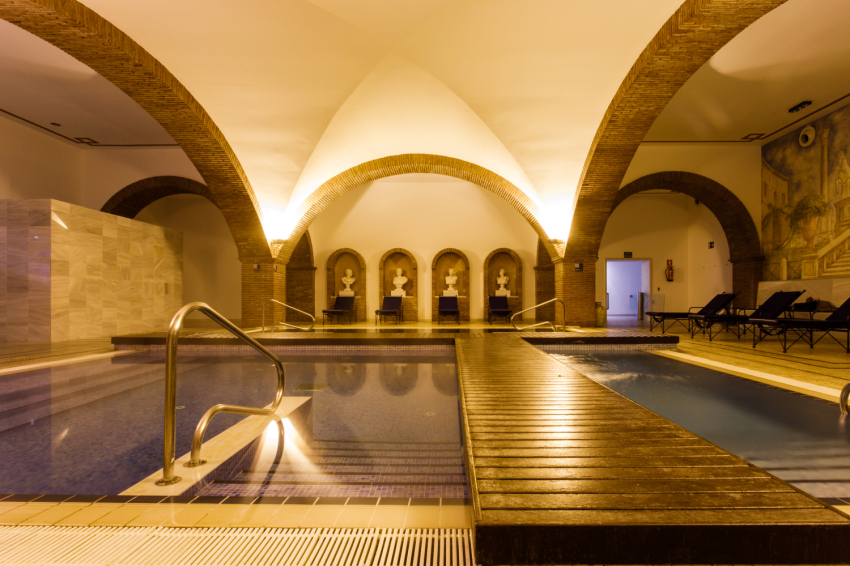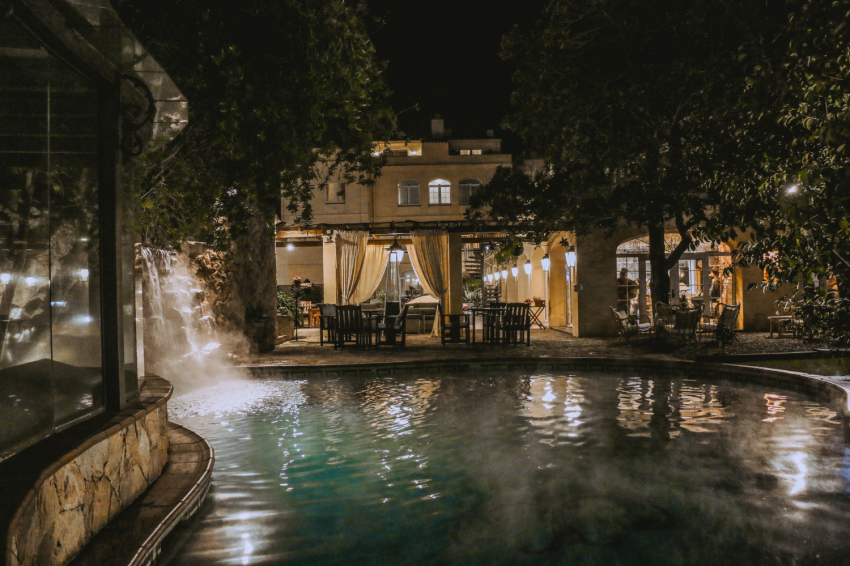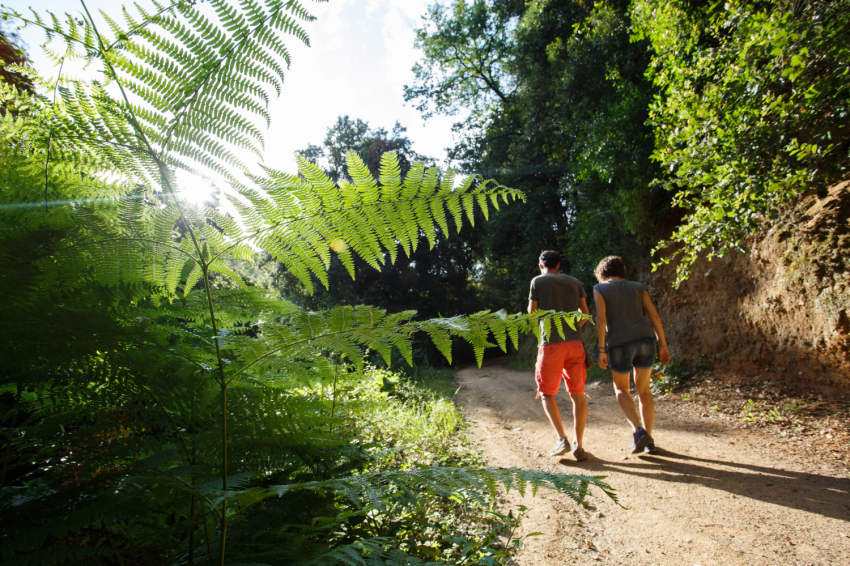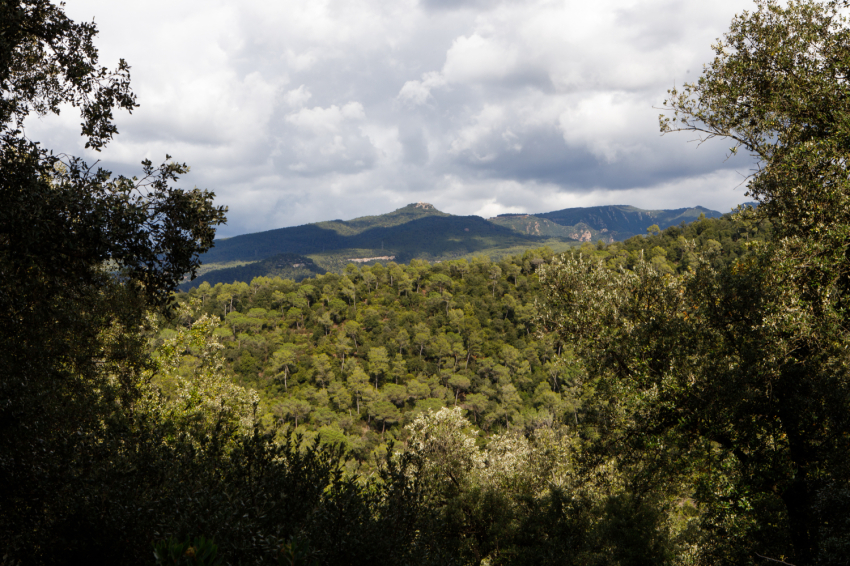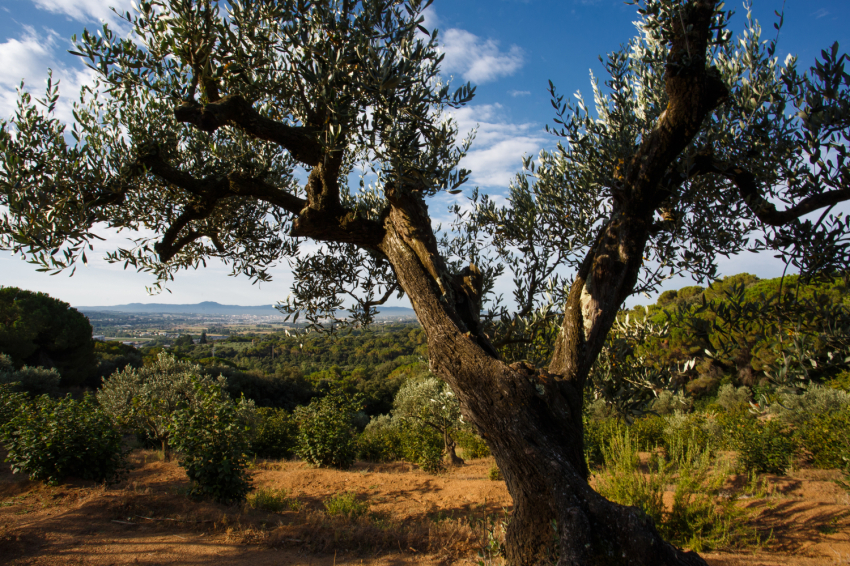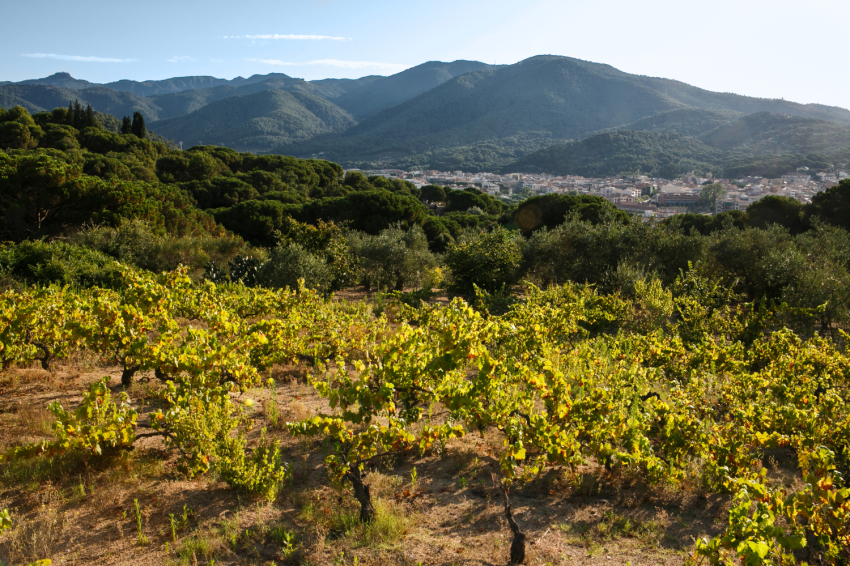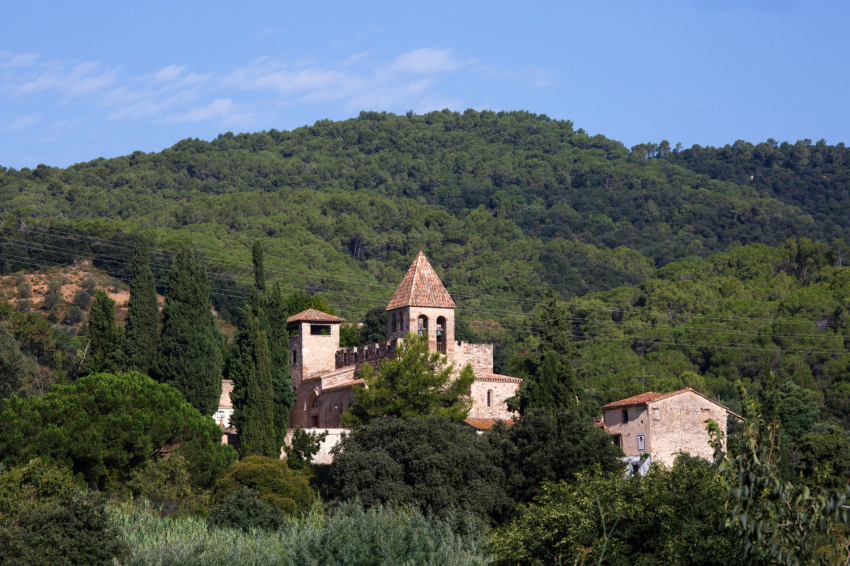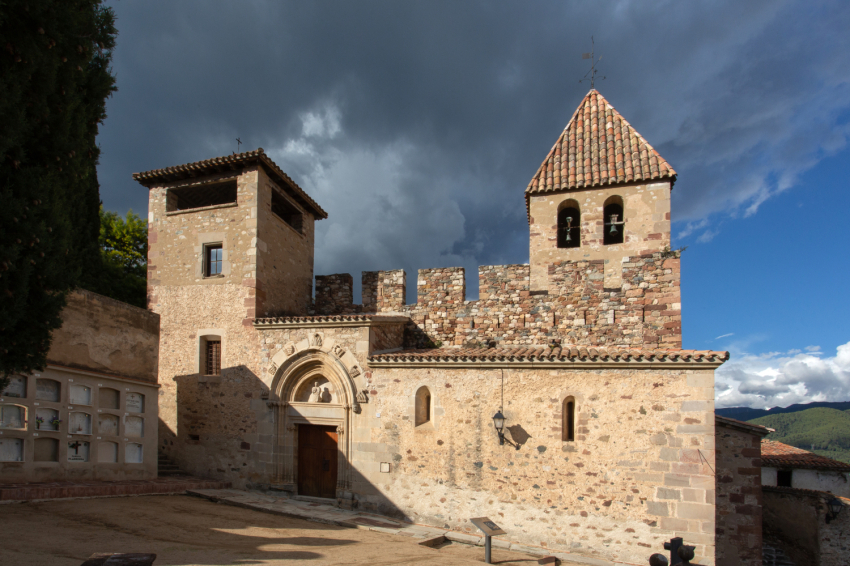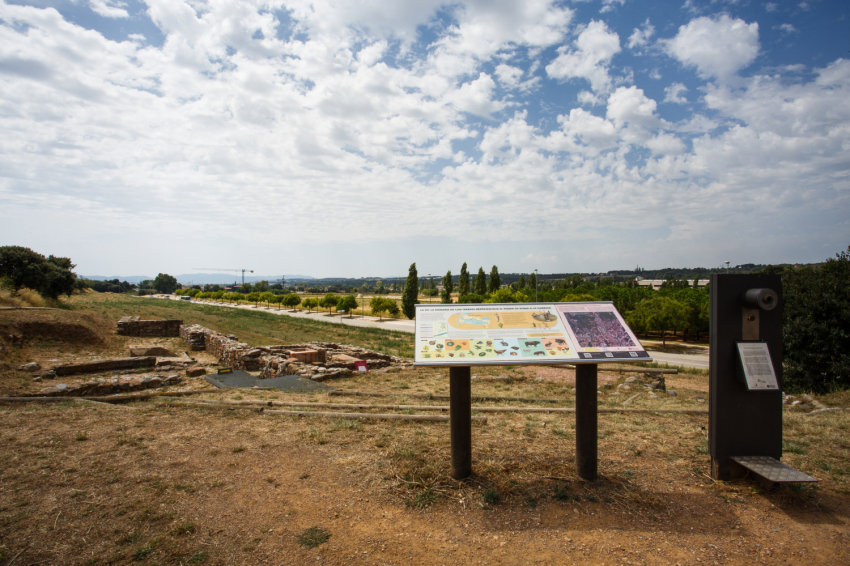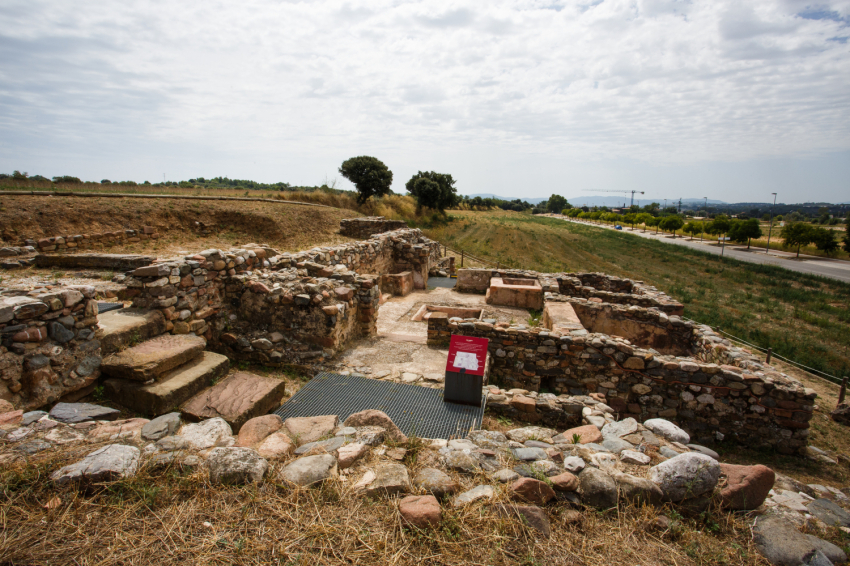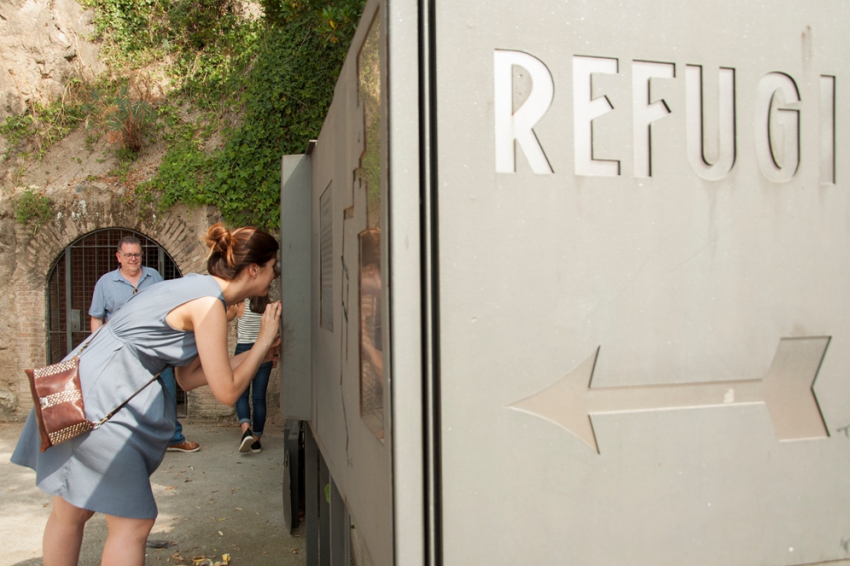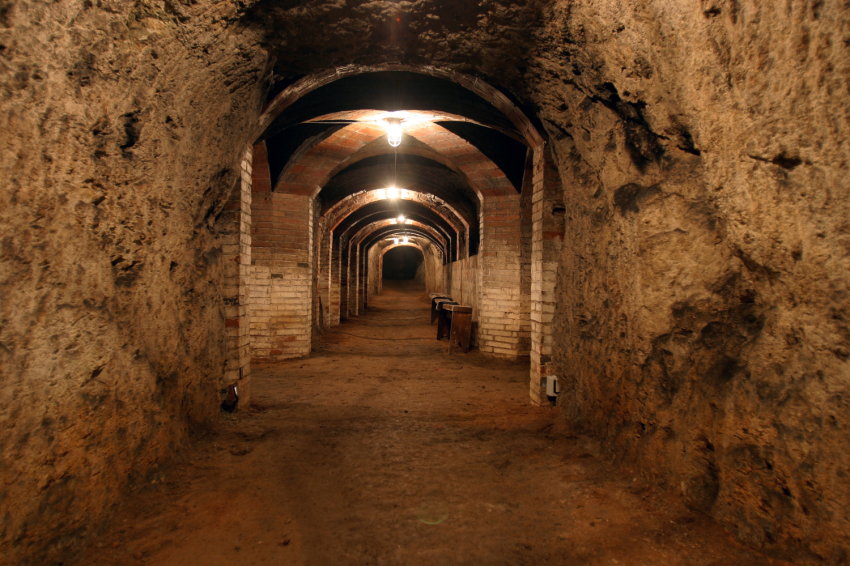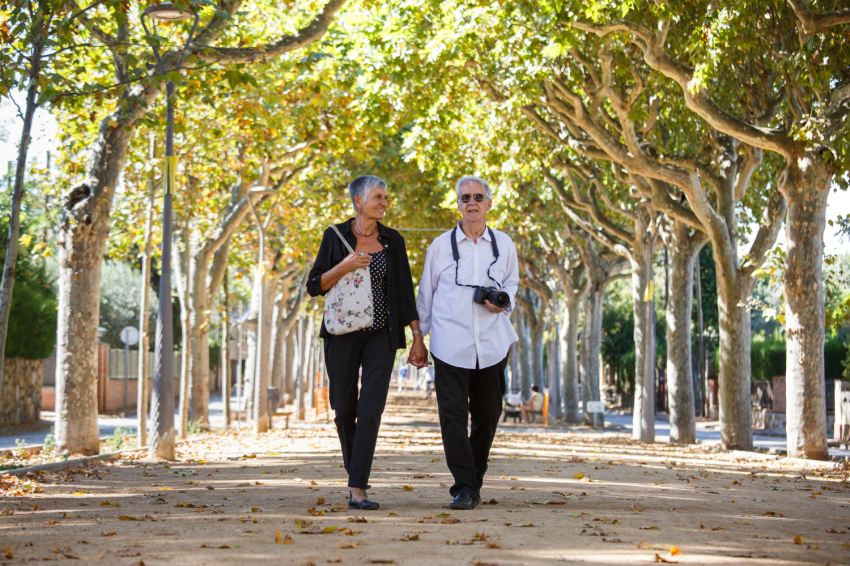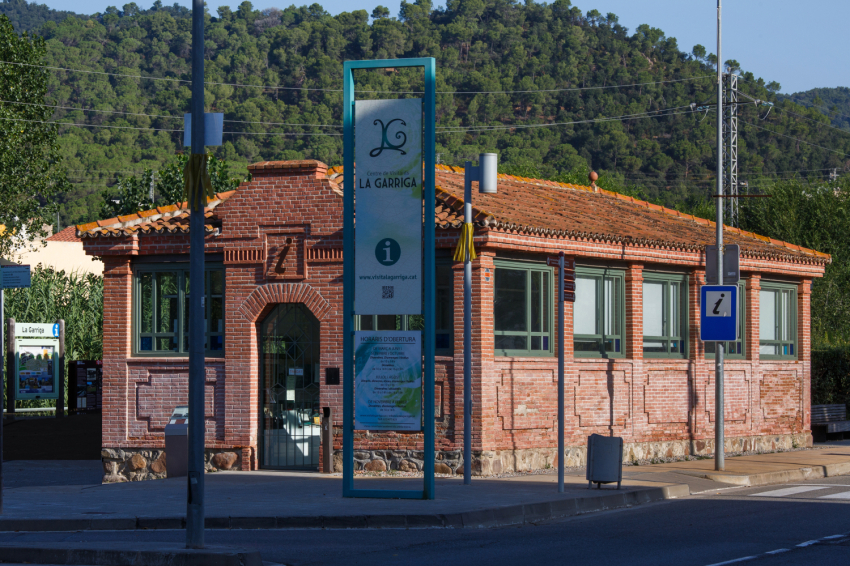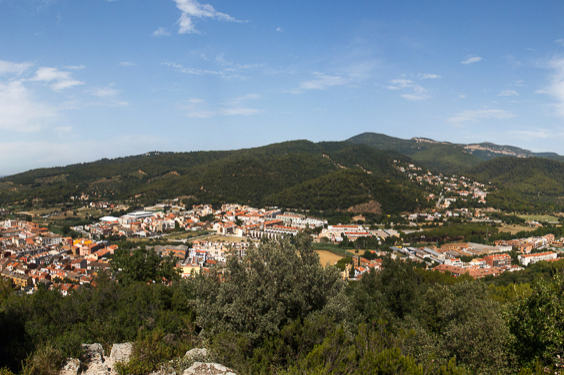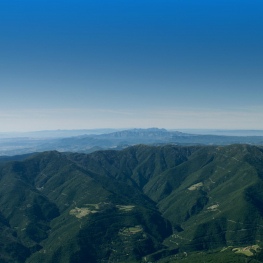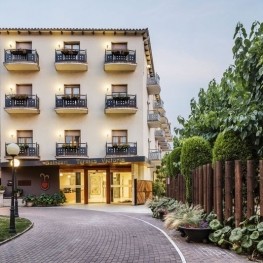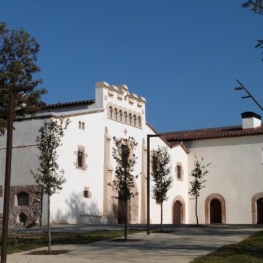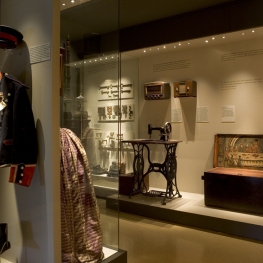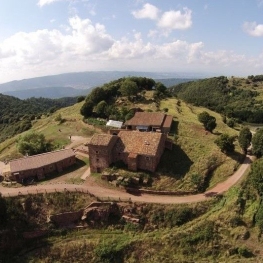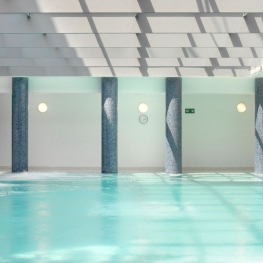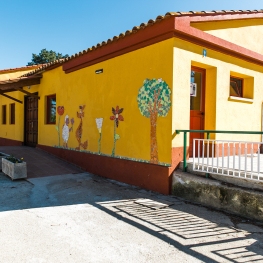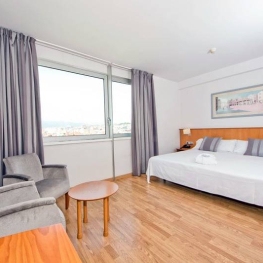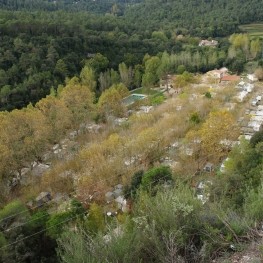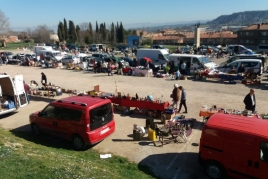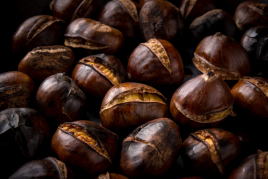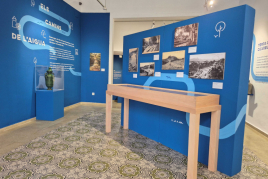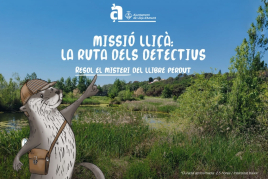La Garriga
La Garriga is one of those towns that allows you to understand the surrounding landscape and the uses its inhabitants have made of it. Its potential as a spa town dates back to the Middle Ages, although it reached its peak between the 19th and 20th centuries, along with the Modernist period. It was then that the spas and the first summer houses were built. The Roman villa, the medieval castle, and the air-raid shelter, along with the Modernist expansion, complete the offer, along with the routes through the surrounding area.
La Garriga is located about 40 kilometers from Barcelona, straddling the Vallesana plain, the Montseny mountain ranges (a Biosphere Reserve since 1978) and the Bertí cliffs.
This privileged location favors the existence of several contrasting landscape areas. On the one hand, the northern edge is markedly forested, with the Montseny slopes below Can Plans, San Cristóbal de Monteugues, and Santa Margarida hill converging, and, from the west, the Montcau plain at the foot of the Bertí cliffs. Overall, this is the most sparsely populated area of the municipality and where the forest cover is densest.
On the other hand, being located parallel to the Congost River and occupying its left bank, the last agricultural landscapes of the municipality remain with some significance.
The diverse landscape has made La Garriga a municipality rich in tree species. A first glance at the town and its surroundings quickly reveals that trees dominate the landscape, with numerous private gardens and the municipality's most emblematic space: El Passeig. This avenue, opened in 1878 and almost a kilometer long, is shaded by two rows of 272 plane trees.
The town is currently bypassed by the C-17 motorway, which connects Barcelona with Vic. The railway line that runs from Barcelona to Puigcerdà and the Tor de Querol also passes through the municipality.
La Garriga is known throughout Catalonia for its modernist buildings, furniture industry, butifarra sausage, hot springs, and Corpus Christi celebrations.
Places of interest
Old core
La Garriga emerged around the hot springs and expanded along the medieval royal road that connected Barcelona with Vic. This road eventually became the town's main street. As the town grew, an urban core was consolidated, which currently revolves around three squares: Plaza de Santa Isabel, Plaza de la Iglesia, and Plaza de Can Dachs.
Today, these last squares and the street that connects them are pedestrian-only areas, ideal for strolling, shopping, having a drink... and also for discovering part of La Garriga's heritage, which includes medieval and modern manor houses, modernist and noucentista houses, as well as the church of San Esteban.
Rosanes House
The representation of feudalism in La Garriga. Although a tower existed at least as early as the 10th century, the current large Rosanes manor house dates back to the 12th and 13th centuries, when the fortified manor house, designed for armed defense, was built, forming the core of the structure we see today.
At that time, the Rosanes were the most influential feudal family in La Garriga, with direct ties to the Catalan counts and kings. Some members of the family, such as Galcerán III de Rosanes, played a prominent role in medieval Catalonia.
Over time, the house evolved into a large, modern country estate. Currently, part of its facilities are being restored and have been declared a Cultural Asset of National Interest. If you have the opportunity, stop by and admire the entire complex.
The Roman villa of Can Terrers
La Garriga 2,000 years ago. The Roman villa of Can Terrers is a testament to the power the Roman Empire wielded in La Garriga 2,000 years ago.
You can freely visit the hot baths, walk through the rooms where their owners once walked two millennia ago, and discover numerous details about one of the most important Roman rural settlements in Catalonia, declared a Cultural Asset of National Interest. Did you know that the wine produced in Can Terrers was exported to Italy, Egypt, and Greece?
Recently, as part of the "Can Terrers, 2,000 Years of History in 4 Steps" project, the visitor circuit, interpretive signage, and activities offered have been updated. The project also includes an excellent audiovisual presentation that can be viewed freely at the La Garriga Visitor Center.
The Dressage
The altarpiece of the medieval Garriga. The name "La Doma" refers to the complex that includes the old parish church, the dome buildings, and the old cemetery.
Although there is documentation that mentions the site from the 10th century, the oldest part of the current church is the Romanesque central nave, built in the 12th century, which preserves a magnificent Gothic altarpiece of Saint Stephen, dating from the late 15th century. This is an exceptional artistic work and the most outstanding of the complex.
The current appearance of the church, however, is due to the renovations of the 16th century, when the side nave with the entrance door to the temple, the deep chapel, the sacristy, the bell tower, the communion hall and the choir were added, all in late Gothic style.
Around the church, in the old cemetery, you can see interesting architectural and sculptural works, and notable figures such as the architect Manuel J. Raspall are buried there.
Station air raid shelter
The shelter explains the Civil War with names and surnames. Located right next to the train station, the station's air-raid shelter became the first museum shelter in Catalonia in 2006. It is an exceptionally well-preserved shelter, excavated directly into the granite rock, with more than 110 meters of galleries.
Built by the residents of La Garriga in 1938, under the orders of the local Passive Defense Board, the shelter served to protect the population from air attacks, especially during the fascist bombing of January 29, 1939.
In 2018, the museum's new design was inaugurated, offering a renewed vision of its historical significance.
Rosanes Airfield
Waging war from Pla de Llerona. In the early 1930s, an Argentine businessman with a passion for aviation built a private airfield in Rosanes, between La Garriga and L'Ametlla, the most advanced of its time.
In 1937, during the Civil War, the Republican army occupied this field and built a military airfield next to it. The entire complex was used in the fight against the fascist uprising, playing a crucial role on the Segre and Ebro fronts, and later in the air defense of Barcelona. Its presence had a strong impact on the local municipalities.
This space, crucial to the country's recent history, remains almost intact. Rosanes Airfield preserves both the space and the infrastructure: the shelters, the control tower, the commander's buildings, the mess hall, the guardhouse, the hangar, and the Rationalist chalet, all in the midst of a magnificent rural setting.
Can Raspall
The family home of architect Manuel J. Raspall. The Can Raspall building is an impressive Modernist construction, considered the first work of architect Manuel J. Raspall. This building reuses some materials from the medieval manor house that previously occupied the same site, where Raspall's mother was born. The architect demolished the old manor house and built the current building, roughly maintaining its proportions.
Today, it's a public building, and the ground floor can be visited. It includes the main hall and a permanent exhibition entitled "Manuel J. Raspall and Modernism: Drawing La Garriga." The building is connected to its neighbor, Can Mayol, a Noucentista work also designed by Raspall.
It is also the starting point for the modernist routes of La Garriga.
Nearby routes
See all routes »- Masías and Refugees in the Ametlla… (a 2.7 km)
- Summer Modernism in the Ametlla del… (a 2.7 km)
- The route of the 3 mountains (a 4.2 km)
- San Sebastián cultural walk in Bigues… (a 5.3 km)
- The Coasts of Batlles in Riells del… (a 5.3 km)
What to do
Balneari Termes Victòria
Caldes de Montbui (a 11.8 Km)At the Balneario Termes Victoria Hotel we want you to feel at…
Museu Internacional dels Titelles de Catalunya, Masia Can Falguera
Palau-solità i Plegamans (a 12.7 Km)Discover the International Puppet Museum of Catalonia, a space for discovery and…
Museu Arxiu Tomàs Balvey
Cardedeu (a 7.8 Km)The MATBC houses the collection of its creator, Tomàs Balvey y Bas…
Where to eat
La Calma, el Bellver
Tagamanent (a 7.8 Km)At the Masía Restaurante El Bellver, from 1:00 p.m. to 3:30 p.m.,…
Taverna ümet
Sabadell (a 21.1 Km)Taverna Ümet is a restaurant in Sabadell offering creative tapas and flavorful…
Where to sleep
Hotel Blancafort Spa Termal
La GarrigaCome to the Hotel Blancafort Thermal Spa and disconnect in the quiet…
Casa de Colònies Mogent
Llinars del Vallès (a 11.7 Km)Welcome to the Mogent Colony House! A magical place where children and…
Aparhotel Atenea Vallès
Granollers (a 9.4 Km)The Atenea Valles Aparthotel Granollers is located in the commercial center of…
Càmping l'Illa
Sant Quirze Safaja (a 10.7 Km)Surrounded by nature, in the middle of the mountains at an altitude…
Events
Experiences
The paths of water at the Tomàs Balvey Museum Archive
Museu Arxiu Tomàs Balvey (Cardedeu) (a 7.8 Km)

